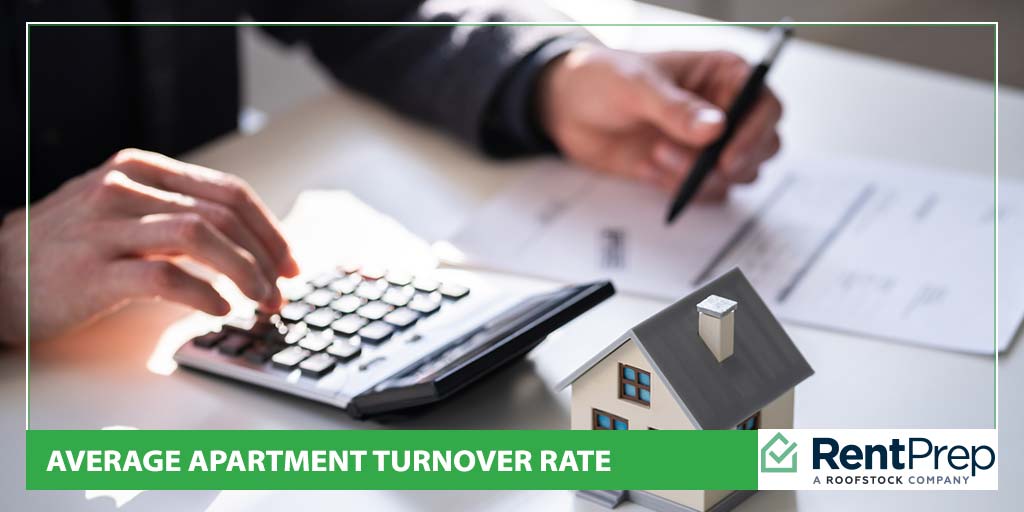
When you want to make as much money as possible while managing rental properties, keeping your turnover rate in check is going to be very important. Every month that your property sits vacant is a month of losses, and those losses are going to have a big effect on what your overall profit margin is when you check your bottom line.
Turnover rate plays a huge factor in how much money you make in the rental business. Even when you find a new tenant quickly, there is a lot of money that has to be put into properties between tenants to ensure the property is in good condition.
Understanding the average turnover rate, how it will affect your business, and what you can do to balance turnover costs are key lessons that all landlords must learn. Today, we’ll introduce turnover rate and some solutions to you so that you can make the most of each property!
A Table Of Contents For Apartment Turnover Costs
- What Is Turnover?
- The Average Apartment Turnover Rate
- How To Calculate Apartment Turnover Rate
- How To Reduce Your Turnover Rate
What Is Turnover?
Apartment or rental turnover typically refers to the period when one tenant moves out, and then the property is vacant until another tenant moves in. No rent can be collected during this vacancy period, but other bills and costs associated with the property will still need to be paid.
As turnover costs can be quite high, most landlords work hard to keep these periods as short as possible.
Apartment turnover rate is the percentage of renters that move out of a property at the end of each contract period. This rate is often used by landlords to help plan their budget, rent costs, and more as it can help them predict how much money they expect to need to invest in turnover periods.
Apartment Turnover Costs

If you’re new to the real estate industry, you might not be completely sure why it is so expensive to not have tenants in your property. What apartment turnover costs are so expensive that they should try to be avoided as much as possible?
The average apartment turnover cost is around $1,750 per month, but that number could drastically differ depending on what your property costs, where it is located, and how much work needs to be done.
Generally speaking, these are some of the most common costs that can be associated with apartment turnovers:
- Rent loss during vacancy
- Marketing costs to find new tenants
- Time and money cost of screening tenant applicants
- Maintenance (repairs, upkeep, etc.)
- Paint and carpet improvements
- Cleaning
- Utilities (for those that need to be kept on)
Every time that a tenant decides to move on to another property, you will need to “reset” your property so that another tenant can move in. While some of these costs might be covered through a security deposit, a lot of the financial responsibility will be on you.
If you can keep the same tenants in your rentals for multiple contract periods rather than having to find a new tenant every year (or sooner), you will not have to do this turnover work as frequently.
The Average Apartment Turnover Rate
What is the average apartment turnover rate, and how does it compare to the turnover rates in your area?
In 2018, the National Apartment Association measured the turnover rate to be lower than in previous years at 46.8%. In 2008, that rate had soared over 50%, so this is a big improvement.
Why Some Regions Have Higher Turnover
As you spend more time in the rental industry, you’ll come to realize that there are some areas that have higher turnover rates than others. While sometimes this is just coincidence, turnover rates can indeed differ from region to region for other reasons as well.
Remember that none of these potential reasons are guarantees. The main thing to consider is the type of tenants that live in your area and why those tenants relocate. If they are often moving because of work and jobs, you can expect higher turnover rates. If they are in it for the long haul, you can expect lower turnover rates.
College Student Areas
Areas that house a lot of college students tend to have a relatively high turnover rate since many students will move on each year. While some might stick around for two to three years, it is more likely to see high turnover rates in these areas.
Older Median Ages
Areas that have a higher median age tend to show a lower average turnover rate. It’s possible that as people age, they tend to like to stay in one place for longer periods, but this is not a guarantee.
Job Growth Markets
Areas with reported high job growth rates usually have higher average turnover rates. When people can’t grow at their jobs, tenants may move on to other areas or cities as they seek new employment opportunities.
How To Calculate Apartment Turnover Rate
Let’s get into how to calculate your apartment turnover rate. If you are only managing one or two properties, this number is going to be less helpful in predicting the future due to the limited data. For landlords that manage multi-unit buildings or hundreds of properties, however, this number is key to your budgeting future.
Here’s how to calculate your rate:

Divide the number of tenants that move out in a 12-month period over the total number of tenants that you have in that 12-month period. Then, multiply by 100.
This rate will be the rate of move-outs, also known as the apartment turnover rate. This number tells you how many tenants you can expect to move out each year based on the number of tenants that you currently have. With the help of this rate, you can calculate your projected expenses more accurately than ever before.
If you’re still unclear about how to do your own turnover rate calculation, this calculator can help.
How To Reduce Your Turnover Rate
If you’ve found that you have a very high turnover rate, you might be looking for ways to lower the turnover costs. This can be done in a number of different ways. Depending on what types of properties you manage, one of these ways might be a better choice than the others, but we have found that all three methods work.
#1: Screen Your Tenants
The first and most important thing that you need to do in order to decrease your apartment turnover rate is to improve your tenant screening process. You can do this by getting help from a reliable tenant screening service that can help you learn how to recognize the best in applicants.
Choosing reliable tenants that are likely to keep the property in good condition will help lower your turnover costs because you will need to do fewer repairs. Additionally, choosing tenants that are more likely to want to stay in a property for two or more years will also decrease your rate and associated costs.
#2: Improve Your Leases
In some cases, people will inevitably move out of your properties. And that’s okay! It wouldn’t be the rental business if you didn’t have tenants leaving now and then, so you should be prepared to handle any associated move-out costs.
Be sure that your leases include clear terms about move-out cleaning fees, security deposits, damages, and any other areas that could cost you more money. By including such information in the lease, you’ll be helping yourself. The tenant will be more likely to return the property in good condition when they are informed, and that will save you money in the turnover.
#3: Relationships & Renewals
Finally, building up a positive relationship with your tenants will make them more likely to want to stay in the property. When tenants trust you as a landlord and believe that you keep their best interest in mind, they’ll find your property more like a home than ever before.
You can also keep an open conversation with them about renewals. Try including regular renewal conversations and lower administrative rates for those that renew their leases as part of your management process. This can help to keep tenants staying longer than before.
Apartment Turnover: Managing The Inevitable
When considering the average apartment turnover rate versus your own, remember that apartment turnover costs are inevitable. Even if you manage to lower your rates, you will still have tenants moving out from time to time.
The key thing that you need to do when it comes to turnover rates is to manage your expectations:
- Figure out what your average tenant turnover rate is
- Calculate how much each turnover tends to cost you
- Budget this amount into your bottom line
When you have your finances in regard to turnovers in line, those vacancy periods will become less of a problem and more of an opportunity!

